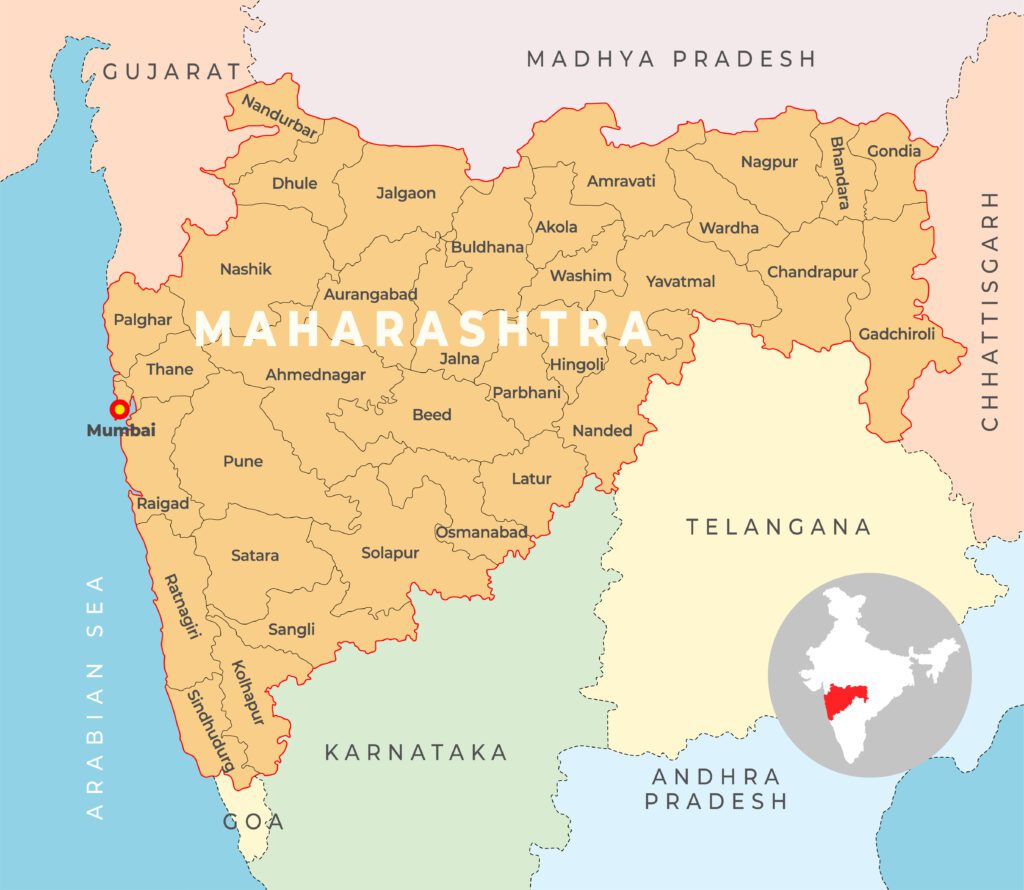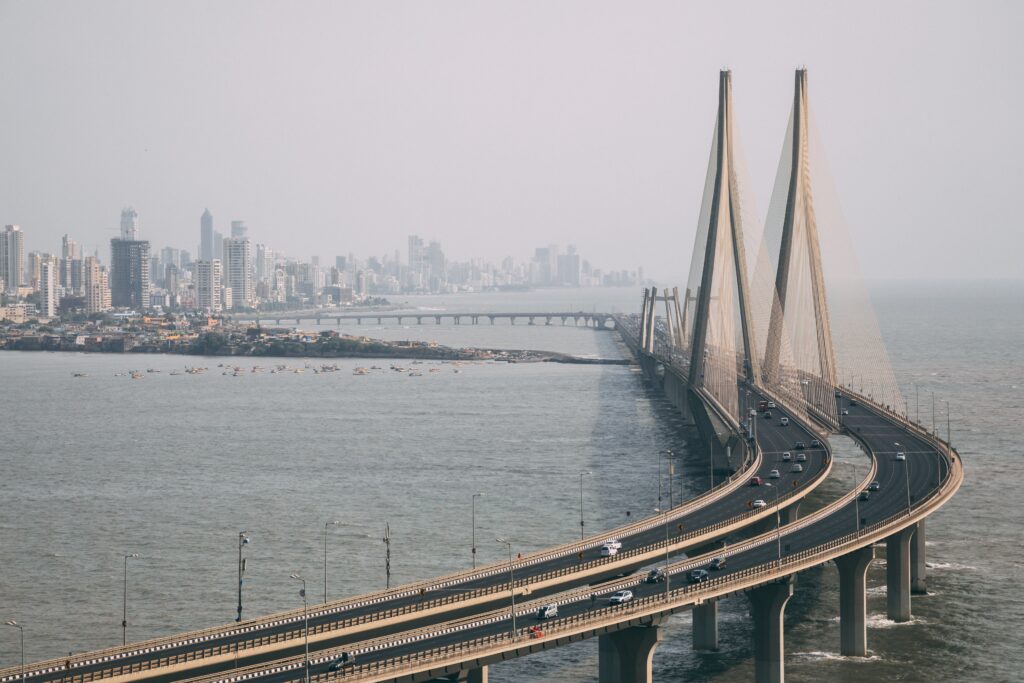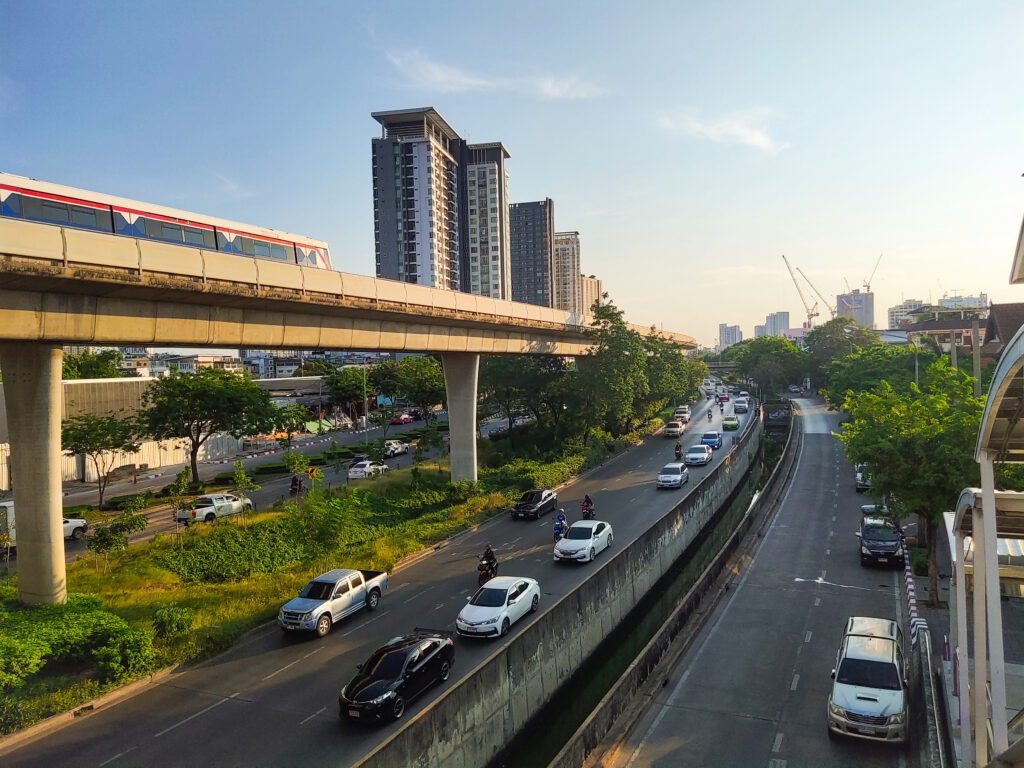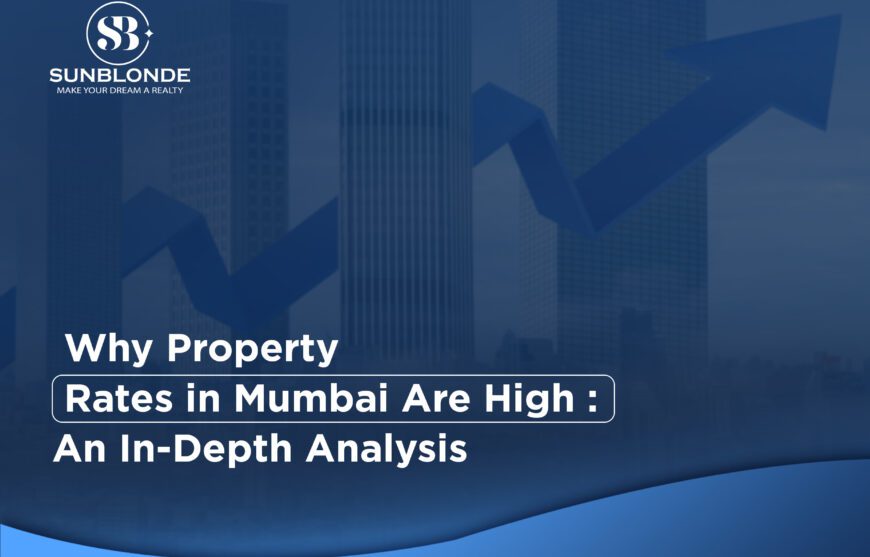Why Property Rates in Mumbai Are High: An In-Depth Analysis
Introduction to Why Property Rates in Mumbai Are High
Mumbai’s Real Estate Market
Mumbai, often referred to as the financial capital of India, holds a pivotal role in the country’s economic landscape. Its real estate market is a significant component of this economic framework, reflecting both the city’s dynamism and its complexities. The city’s strategic location along the Arabian Sea, coupled with its status as a hub for commerce, trade, and industry, has made it a magnet for investments, both domestic and international. This has inevitably led to a surge in property rates, positioning Mumbai’s real estate among the most expensive in the world.
The demographic factors of Mumbai further accentuate the demand for real estate. With a population exceeding 20 million, the city is one of the most densely populated urban areas globally. This immense population pressure translates into a continuous demand for residential and commercial spaces. The influx of professionals, entrepreneurs, and laborers seeking opportunities in Mumbai’s thriving sectors such as finance, entertainment, and technology only adds to this demand, thereby pushing property rates higher.

Economically, Mumbai is a powerhouse. It contributes significantly to India’s GDP, with sectors like banking, finance, and real estate playing crucial roles. The presence of major corporate headquarters, stock exchanges, and international consulates underscores the city’s importance on a global scale. This economic vibrancy attracts a diverse range of investors looking to capitalize on Mumbai’s growth potential, further inflating property prices.
Understanding the extent of Mumbai’s real estate market requires a comprehensive look at various contributing factors. The city’s land scarcity, infrastructural developments, and regulatory environment all interplay to create a unique real estate scenario. As we delve deeper into these elements, it becomes evident why Mumbai’s property rates command such a premium, making it a fascinating subject for analysis.
Geographic and Demographic Factors
Mumbai, often referred to as the financial capital of India, faces unique geographic constraints that significantly influence property rates. As a coastal city, Mumbai is bounded by the Arabian Sea on one side, inherently limiting the availability of land for development. The city’s topography is further complicated by numerous natural and man-made barriers, including hills, forests, and existing urban infrastructure. This scarcity of land creates a high premium on available real estate, driving up property prices.
Coupled with geographic limitations, Mumbai’s demographic factors also play a crucial role in the escalation of property rates. The city is one of the most densely populated urban areas in the world, with a population density exceeding 20,000 people per square kilometer. Mumbai’s population has experienced robust growth over the past few decades, fueled in part by urban migration. Individuals from across India move to Mumbai seeking employment opportunities and a better quality of life, further intensifying the demand for both residential and commercial properties.
According to recent statistics, Mumbai’s population has surged from approximately 12 million in 2001 to over 20 million in 2021. This rapid urbanization trend has led to increased pressure on the city’s limited real estate resources. The influx of people has not only heightened the demand for housing but also strained existing infrastructure, necessitating the development of new residential complexes, office spaces, and commercial establishments. Consequently, the burgeoning demand in the face of limited supply perpetuates a constant upward pressure on property prices.
In essence, the geographic constraints and demographic dynamics of Mumbai contribute significantly to the elevated property rates. The limited land availability, coupled with high population density and continuous urban migration, creates a competitive real estate market where demand consistently outstrips supply, leading to escalating property values.

Mumbai, often hailed as the financial capital of India, stands as a pivotal economic hub that attracts a significant influx of professionals and businesses. The city is home to the headquarters of numerous major corporations, including several Fortune 500 companies, and serves as the nucleus of India’s financial activities. The presence of two premier stock exchanges, the Bombay Stock Exchange (BSE) and the National Stock Exchange (NSE), further consolidates Mumbai’s status as a central financial powerhouse. This concentration of economic activity creates a plethora of high-paying job opportunities, which in turn, draws a diverse and skilled workforce from across the nation.
The continuous arrival of individuals seeking employment and entrepreneurial prospects significantly impacts the city’s housing market. With sectors such as banking, finance, information technology, and media flourishing in Mumbai, the demand for residential properties has surged. High-income professionals, eager to reside close to their workplaces, are willing to invest in pricey real estate, thereby driving up property rates. Additionally, the city’s thriving startup ecosystem and its appeal to global investors add another layer of demand for both commercial and residential spaces.
Moreover, Mumbai’s extensive network of multinational corporations and the presence of regional headquarters for several global businesses underscore its global economic significance. As these entities expand their operations, they bring an influx of expatriates and high-net-worth individuals, who seek premium accommodations, further escalating the demand for housing. This demand-supply imbalance is a critical factor contributing to the elevated property rates in the city.
In summary, Mumbai’s robust economic landscape, characterized by abundant employment opportunities and a thriving business environment, plays a crucial role in driving up property rates. The city’s allure as a financial epicenter attracts a continuous stream of professionals and entrepreneurs, resulting in a heightened demand for housing that inevitably leads to higher property prices.
Infrastructure and Development Projects
Mumbai, often referred to as the financial capital of India, has been undergoing significant infrastructural transformations aimed at enhancing its connectivity and livability. The introduction of new metro lines is one of the most notable projects. With the Mumbai Metro Rail Corporation (MMRC) working on multiple lines across the city, these developments are set to ease the daily commute for millions of residents. The metro network expansion is expected to connect previously isolated areas, thereby boosting their real estate value.
In addition to the metro, the construction of new highways and expressways is another major factor contributing to the rising property rates in Mumbai. The Mumbai Trans Harbour Link (MTHL), for instance, is poised to significantly reduce travel time between Mumbai and Navi Mumbai. This would not only enhance the connectivity but also open up new areas for residential and commercial development, making them more attractive to investors and homebuyers alike.
Furthermore, Mumbai’s business districts are receiving considerable attention. The establishment of new business hubs, such as the Bandra-Kurla Complex (BKC) and the upcoming International Financial Services Centre (IFSC) in Bandra East, are transforming the city’s economic landscape. These areas are designed to cater to multinational corporations, leading to a surge in demand for high-end residential and commercial properties in their vicinity.

The city’s focus on improving its infrastructure extends beyond just transportation and business districts. Efforts to enhance public amenities, green spaces, and recreational facilities are also underway. These improvements significantly contribute to the overall quality of life, making Mumbai a more desirable place to live. As a result, properties in areas benefiting from these developments see a substantial increase in value.
Overall, the ongoing and upcoming infrastructure projects in Mumbai are pivotal in driving up property rates. By improving connectivity and livability, these developments make the city more attractive to both residents and investors, thereby elevating the demand and prices of real estate in Mumbai.
Mumbai, often referred to as the financial capital of India, boasts a unique social and cultural landscape that significantly influences its property rates. One of the primary factors contributing to high property rates is Mumbai’s status as the entertainment capital of India. The city is home to Bollywood, the Hindi-language film industry, which attracts a plethora of artists, filmmakers, and entertainment professionals. This creates a robust demand for residential properties, particularly in areas like Bandra, Andheri, and Juhu, where many celebrities reside.
Beyond its cinematic allure, Mumbai’s vibrant lifestyle is another key factor driving property prices. The city offers a plethora of cultural events, festivals, and nightlife options, making it an attractive place to live for both locals and expatriates. Areas such as Colaba, Lower Parel, and Worli are known for their bustling social scenes, further escalating property rates in these locales.
Educational institutions also play a pivotal role in shaping Mumbai’s real estate market. The city is home to some of India’s most prestigious schools, colleges, and universities, such as the Indian Institute of Technology Bombay (IIT-B), the University of Mumbai, and numerous international schools. Families often seek to reside near these institutions to provide their children with the best educational opportunities, thereby driving up property prices in these areas.

Healthcare facilities are another crucial element contributing to the high cost of property in Mumbai. The city boasts some of the best medical institutions in the country, including Tata Memorial Hospital, Lilavati Hospital, and Kokilaben Dhirubhai Ambani Hospital. Access to top-notch healthcare services is a significant consideration for many homebuyers, leading to increased demand and higher property rates in well-served areas.
In essence, Mumbai’s diverse cultural landscape, coupled with its leading educational institutions and healthcare facilities, makes it a highly desirable place to live. These social and cultural factors collectively contribute to the city’s elevated property rates, reflecting the premium that residents are willing to pay for the unique lifestyle and opportunities that Mumbai offers.
Government policies and real estate regulations play a significant role in shaping property rates in Mumbai. Zoning laws, which dictate the usage of land in various parts of the city, often lead to a scarcity of available land for residential development. This scarcity, in turn, drives up property prices as demand outstrips supply. The stringent Floor Space Index (FSI) regulations also limit the amount of construction that can be undertaken on a given plot of land, further exacerbating the supply-demand imbalance.
Land acquisition regulations add another layer of complexity. The process of acquiring land for development is often prolonged and fraught with bureaucratic hurdles. These delays contribute to increased holding costs for developers, which are then passed on to the end consumers in the form of higher property prices. Additionally, the compensation rates prescribed under the Land Acquisition Act can be significantly high, adding to the overall cost of development.
Real estate taxes, including stamp duty and registration fees, are other critical factors influencing property rates. High stamp duty rates increase the transaction costs for buyers, making real estate investments less attractive. While the government occasionally offers incentives such as stamp duty reductions or tax holidays to stimulate the market, these measures are often short-term and do not substantially alter the overall cost structure.
Incentives for affordable housing projects, such as tax breaks and expedited approval processes, do exist. However, the high cost of land and construction often makes it challenging for developers to undertake these projects at scale. Furthermore, the implementation of the Real Estate (Regulation and Development) Act (RERA) has introduced a level of transparency and accountability that benefits buyers but also adds compliance costs for developers, which can indirectly influence property rates.
Overall, government policies and real estate regulations create a complex landscape that significantly impacts property prices in Mumbai. While some measures aim to stabilize the market, others inadvertently contribute to the high cost of real estate in the city.
Investment and Speculation
The dynamics of real estate in Mumbai are significantly influenced by investment and speculation, contributing to the city’s soaring property rates. Mumbai, one of India’s financial hubs, is often viewed as a safe haven for real estate investment, attracting a wide array of investors ranging from local individuals to international corporations. This perception of security and potential for high returns fuels demand, thereby inflating property prices.
Investors consider Mumbai’s real estate market as a lucrative opportunity due to its consistent appreciation in property values. The city’s robust economic framework, coupled with its status as a commercial epicenter, makes it an attractive destination for investment. Real estate investors, both domestic and foreign, buy properties not just for immediate use but also for long-term gains. This speculative behavior contributes significantly to the limited availability of properties, driving prices higher.

Foreign investment plays a pivotal role in the Mumbai property market. Foreign investors, particularly from countries with stronger currencies, find Mumbai real estate comparatively affordable. Their investments not only bring in substantial capital but also drive up market prices. The influx of foreign capital intensifies competition among buyers, resulting in a hike in property rates. Moreover, the liberalization of foreign direct investment (FDI) policies in real estate has further facilitated this trend, making Mumbai a global investment hotspot.
Speculators also play a crucial role in the market dynamics. These individuals or entities purchase properties with the intention of selling them at higher prices, banking on the market’s upward trajectory. Such speculative activities reduce the number of properties available for genuine buyers, thereby creating an artificial scarcity that propels prices upward. The speculative demand often leads to price bubbles, which, while lucrative for investors, make it challenging for average consumers to afford property in the city.
Overall, the intersection of investment and speculation in Mumbai’s real estate market is a key factor behind the high property rates. The continuous cycle of buying and selling for profit, compounded by foreign investments, sustains an environment where property prices are perpetually on the rise, reflecting the complex interplay of market forces.
Challenges and Future Outlook
The real estate market in Mumbai presents significant challenges for potential homeowners. Affordability is a primary concern, as the high property rates make it difficult for many to enter the market. This issue is compounded by the limited availability of housing, which drives prices even higher. The demand-supply gap remains a persistent problem, as the city’s population continues to grow, outstripping the pace of new construction.
Another challenge is the regulatory environment. Although the Real Estate (Regulation and Development) Act (RERA) was introduced to bring transparency and accountability, the implementation of such regulations can be inconsistent. Developers often face bureaucratic hurdles and delays in obtaining necessary approvals, contributing to project delays and increased costs. This regulatory complexity can deter investment and slow down the delivery of new housing units.

Looking ahead, the future trends in Mumbai’s property market will likely be influenced by a range of factors. Economic shifts, such as changes in interest rates or economic growth rates, can impact both the demand for and the affordability of housing. Policy changes, particularly those aimed at increasing housing supply or making financing more accessible, could also play a crucial role.
Global market influences, including foreign investment and the economic climate in other major cities, are additional variables that could affect property rates. For instance, if international investors see Mumbai as a lucrative market, their influx could drive up prices further. Conversely, any economic downturns in global markets might lead to a reduction in investment, potentially stabilizing prices.
In conclusion, while challenges like affordability and housing shortages persist, the future of Mumbai’s property rates is contingent upon a complex interplay of local and global factors. Whether property rates will continue to rise or stabilize will depend largely on how these elements evolve in the coming years.


Leave a Reply